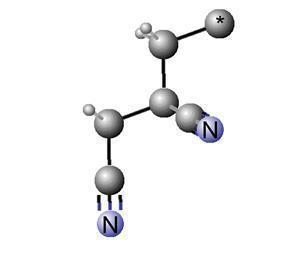What is Acrylonitrile?
Acrylonitrile is a highly flammable and toxic chemical that is used in the production of acrylic materials and other plastics. In its pure form, acrylonitrile is a colorless liquid but impurities can give it a yellow appearance. Acrylonitrile is soluble in water and most organic solvents, boils at 77.3 degrees Celsius, and melts at 82 degrees Celsius. Acrylonitrile polymerizes spontaneously when heated, although polymerization inhibitors are often used to prevent this. Acrylonitrile releases hydrogen cyanide and nitrous oxide when burned, and is widely investigated and disapproved of due to its negative effects on human health.
How is Acrylonitrile Made?
Acrylonitrile is produced by mixing propylene, ammonia, and air in a fluid and reacting the solution with a catylist (usually heat or an alkaline acid). A polymerization inhibitor, usually ethylhydroquinone, is often used to prevent acrylonitrile from exploding or converting into a polymer during production. It should be noted that technical grade acrylonitrile is more than 99% pure.
Applications
Although acrylonitrile is an extremely toxic chemical, it can be used for a number of purposes. Acrylonitrile is widely used to produce acrylics and other plastics and was once used as a rubber replacement during World War II. Acrylonitrile is also used to produce most adhesives, barrier resins, surface coatings, and nitrile elastomers. In addition to being used in pharmacology, cosmetics, and chemistry, acrylonitrile is used to produce acrylonitrile butadiene styrene, which is highly heat resistant.
Advantages
Acrylonitrile, especially in the form of acrylonitrile butadiene styrene, has several advantages that cause various industries to still use it. For example, acrylonitrile is a strong adhesive on most surfaces and is naturally glossy. Acrylonitrile is also an excellent electricity conductor and is therefore used in many electrical applications. It is easily produced and can be mixed with other chemicals/substances to create various polymers.
Disadvantages
Despite its advantages, people should remember acrylonitrile’s disadvantages. The biggest disadvantage is its toxicity to both humans and animals. Acrylonitrile is also harmful to the environment in general and produces vast amounts of thick smoke when burned. In its pure form, and even when combined with other substances, acrylonitrile is extremely flammable and may even explode if not properly prepared or handled. Acrylonitrile is also rather expensive and several environmental protection and health agencies, such as the Environmental Protection Agency (EPA), the Occupational Safety & Health Administration (OSHA), and the World Health Organization (WHO) strictly govern it.


Comments - No Responses to “What is Acrylonitrile?”
Sorry but comments are closed at this time.